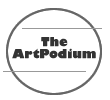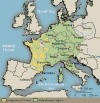 Unlike in the Classical Period, where human lay on the bases of civilization, in the Middle Ages God and the church formed the central element of their society. This fact is very important in relation to the Middle Ages.
Unlike in the Classical Period, where human lay on the bases of civilization, in the Middle Ages God and the church formed the central element of their society. This fact is very important in relation to the Middle Ages.
The Middle Ages began around 500 after Christ. In Europe this was a period of chaos due to the continuous invasions of the barbarian people as well as the migrations that were the direct result of these invasions. During this dark period a lot of the civilization and culture from the Classical Period perished.
The economy of the Middle Ages was based on agriculture and the feudal system. The people were confused, scared and scattered.
Therefor
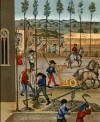 they were barely able to develop themselves on a spiritual level. The people had no information regarding natural phenomena or diseases and health. They believed everything was in Gods hands. This primitive civilization, where God was all-power, saw every form of adversity, every disease, every fight, every failed harvest, etc. as direct punishment of God. The difference between wealth and poverty was also explained as Gods will. Therefore everybody reconciled which meant working very hard to maintain themselves and especially the nobility and the church.
they were barely able to develop themselves on a spiritual level. The people had no information regarding natural phenomena or diseases and health. They believed everything was in Gods hands. This primitive civilization, where God was all-power, saw every form of adversity, every disease, every fight, every failed harvest, etc. as direct punishment of God. The difference between wealth and poverty was also explained as Gods will. Therefore everybody reconciled which meant working very hard to maintain themselves and especially the nobility and the church.
 The churches and monasteries of course stimulated this idea and emphasized the idea that man had to live a good life on earth to achieve a place in heaven. In the Middle Ages the existence on earth was of inferior importance and common life was aimed at the after life. The fear of the people to end up in hell was so great that it made them very obsequious to their dictators.
The churches and monasteries of course stimulated this idea and emphasized the idea that man had to live a good life on earth to achieve a place in heaven. In the Middle Ages the existence on earth was of inferior importance and common life was aimed at the after life. The fear of the people to end up in hell was so great that it made them very obsequious to their dictators.
The idea of the destruction of the world exited strongly during the early Middle Ages. This believe intensified their fear and brought about a big increase of devotion.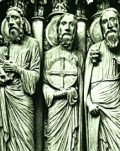 In a Vision of John the Baptist, the Apocalypse, a second arrival on earth of Christ is foreseen. This arrival will mean the end of the world and all people will be judged: the Final Judgment. During this final judgment the souls of the people will be weighted. The good will go to heaven and the bad will be banished to hell. In the Middle Ages the people were convinced of the fact that this event would take place exactly 1000 years after the birth of Christ. This year divides the Middle Ages in the Early (500 a.C. - 1000 a.C.) and the Late Middle Ages (1000 a.C. - 1500 a.C.).
In a Vision of John the Baptist, the Apocalypse, a second arrival on earth of Christ is foreseen. This arrival will mean the end of the world and all people will be judged: the Final Judgment. During this final judgment the souls of the people will be weighted. The good will go to heaven and the bad will be banished to hell. In the Middle Ages the people were convinced of the fact that this event would take place exactly 1000 years after the birth of Christ. This year divides the Middle Ages in the Early (500 a.C. - 1000 a.C.) and the Late Middle Ages (1000 a.C. - 1500 a.C.).
The church was the place were the people could not only hear the word of God but they could also see the word of God. The main purpose of the decoration in the churches was to show and learn the people the Christian
 doctrine. The greater part of the people could neither read nor write. Therefore the warnings regarding the result of a bad and evil life on earth were reflected above the entrance and in the interior of the church in a striking way. Often a scene of the Last Judgment can be found above the main entrance, the west-portal. This scene reminded the people of what awaited them and stimulated them to live a good and descent life. In many other places of the Romaine (Early Middle Ages) churches the horrifying scenes regarding hell and damnation can be found, which of course had the same effect on the people.
doctrine. The greater part of the people could neither read nor write. Therefore the warnings regarding the result of a bad and evil life on earth were reflected above the entrance and in the interior of the church in a striking way. Often a scene of the Last Judgment can be found above the main entrance, the west-portal. This scene reminded the people of what awaited them and stimulated them to live a good and descent life. In many other places of the Romaine (Early Middle Ages) churches the horrifying scenes regarding hell and damnation can be found, which of course had the same effect on the people.
In medieval society the church and the nobility formed the elite who completely held all power. Around 1200 that changed because of the slowly reviving and growing economy. Part of the people managed to free themselves from the feudal system and due to free trade they builded an independent life. New cities arose and a whole new community originated: middle class. This middle class brought about enormous changes in the established social structure. Their little autonomy made it possible to obtain a certain kind of self-government. Beceause of this
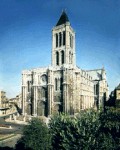 their cities became more and more independent and often also more powerfull.
their cities became more and more independent and often also more powerfull.
The birth of the cities, the flourishing business and the growing independency of the people also brought about a huge change in their religious beliefs. They believed the growing prosperity to be a sign of Gods good intentions for mankind. Their feeling of constant fear for Gods punishment made way for His glorification. They were feeling euforicly happy beceause God had spared mankind. This changing mentality caused a new movement in plastic arts and architecture: The Gothic Period.
The
 church, the house of God, had to be the grand and radiant centre of their religion. Therefor the people tried to realise a heavenly atmosphere inside the buildings. Their churches were build much larger and especially much higher than their romaine predecessors. The traditional romaine vaults (tunnel-effect) did not allow such enlargements but after many experiments the gothic vault (with crossings) was invented. This type of vault was used arount 1130 for the first time by abbot Suger, in the expansion of the chancel of the Saint Denis Church near Paris, France.
church, the house of God, had to be the grand and radiant centre of their religion. Therefor the people tried to realise a heavenly atmosphere inside the buildings. Their churches were build much larger and especially much higher than their romaine predecessors. The traditional romaine vaults (tunnel-effect) did not allow such enlargements but after many experiments the gothic vault (with crossings) was invented. This type of vault was used arount 1130 for the first time by abbot Suger, in the expansion of the chancel of the Saint Denis Church near Paris, France.
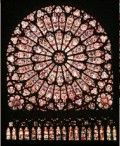 The construction of bigger churches became a necessity beceause of the growing population as well as the increasing influx of pilgrim. Their pursuit of hight has a symbolic explanation. The church represented the house of God. The ceiling symbolized heaven. This heavenly atmosphere was intensified by the light inside the gothic churches. The new vault made it possible to construct larger window openings and therefore the churches were filled with daylight. To intensify the atmosphere even more, they used coloured leaded-glass windows.
The construction of bigger churches became a necessity beceause of the growing population as well as the increasing influx of pilgrim. Their pursuit of hight has a symbolic explanation. The church represented the house of God. The ceiling symbolized heaven. This heavenly atmosphere was intensified by the light inside the gothic churches. The new vault made it possible to construct larger window openings and therefore the churches were filled with daylight. To intensify the atmosphere even more, they used coloured leaded-glass windows.
 The growing prosperity and status of the citizens was responsible for the development of architecture. Within their cities they constructed representative buildings like the city hall and the centre of commerce. These important buildings were also constructed in Gothic style.
The growing prosperity and status of the citizens was responsible for the development of architecture. Within their cities they constructed representative buildings like the city hall and the centre of commerce. These important buildings were also constructed in Gothic style.
Within sculpture this new mentality was noticable as well . Above the portals of the churches now e.g. Christ in Majesty was represented in stead of the frightening scenes of the Last Judgment. Neither the monsters to warn the people about the horror of hel were reflected any longer. The sculpture of the Gothic Churches and buildings showed their admiration for the Creation. All aspects of the world, seen throught their eyes, can be found in and on the churches from these times: stories from the Bible, the Saints, the Zodiac symbols etc.

